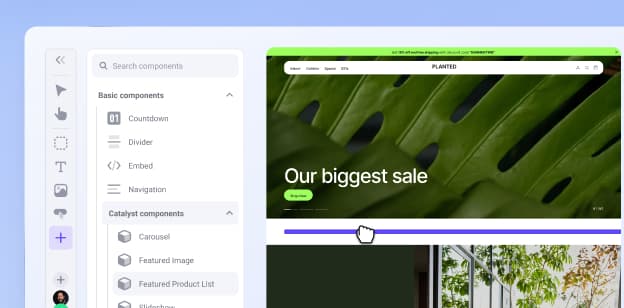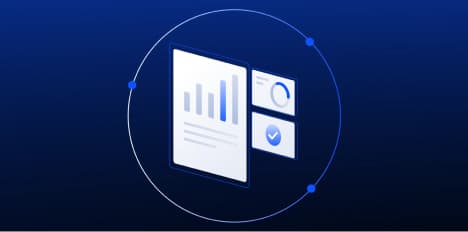Explore the
BigCommerce platform
Get a demo of our platform to see if we’re the right fit for your business.
Not ready for a demo? Start a free trial
The Ultimate Guide to Black Friday 2025 Ecommerce Preparation

Written by
Annie Laukaitis29/08/2025


The Ultimate Guide to Black Friday 2025 Ecommerce Preparation
Get The Print Version
Tired of scrolling? Download a PDF version for easier offline reading and sharing with coworkers.
A link to download the PDF will arrive in your inbox shortly.
Black Friday is coming, and for ecommerce businesses, it remains one of the most powerful shopping events of the year.
Even as holiday sales behaviors shift, Black Friday continues to be a key moment when online shoppers actively seek out the best exclusive deals, expect seamless experiences, and are more likely to convert. In a holiday shopping season where value matters more than ever, this day presents a critical opportunity to connect with new customers, reward loyal customers, and boost sales at scale.
For online retailers, success on Black Friday comes down to readiness. That means showing up with the right products, compelling offers, and a frictionless customer experience that can turn browsers into buyers.
In this blog, we’ll explore the history of Black Friday, how it compares to Cyber Monday, and the strategies on how to prepare your ecommerce site for one of the biggest shopping days of the year.
The history of Black Friday
The term “Black Friday” dates back to the 1960s, when Philadelphia police officers used it to describe the crowds and traffic that arrived the day after Thanksgiving. But for retailers, the meaning quickly evolved. What started as a chaotic shopping day became a symbol of profitability, marking the moment when businesses went from being in the red, indicating losses on balance sheets, to in the black, meaning they were turning a profit.
As more retailers embraced the day with major promotions, Black Friday sales became known as the unofficial kickoff to the holiday sales season. For decades, it was defined by early store openings, long lines, and doorbuster deals. But with the rise of ecommerce platforms, like BigCommerce and Shopify, and mobile devices, the event has transformed.
Today, Black Friday is no longer limited to physical stores. Online sales have surged, and shoppers now expect to find the same or even better deals online. Big players like Amazon and Walmart have helped extend the sales window, often launching Black Friday pricing weeks in advance and blurring the lines between Black Friday and Cyber Monday and the broader holiday season.
Still, the significance remains. Black Friday continues to drive a massive volume of both online and in-store purchases, giving ecommerce businesses a unique opportunity to generate revenue, reach new customers, and set the tone for the final stretch of Q4.
Black Friday & Cyber Monday: What sets them apart
While Black Friday and Cyber Monday are often grouped together, each plays a distinct role in the ecommerce strategy for the holiday season.
Black Friday has traditionally been rooted in physical retail. It’s the day shoppers line up for early morning deals and in-store promotions. But over the past decade, ecommerce platforms have steadily gained ground. Today, many customers prefer to browse Black Friday deals from the comfort of their smartphones or laptops, and brands have adapted by offering sitewide discounts, free shipping, and early access offers online.
Cyber Monday, by contrast, was created for online shopping. Originally launched to encourage online sales after the holiday weekend, it has evolved into one of the biggest ecommerce platform days of the year. Cyber Monday shoppers are often more deal-focused, tech-savvy, and driven by a sense of urgency, looking to score limited time offers before they expire.
So which one matters more? The answer is both. While Black Friday tends to generate more traffic across channels, Cyber Monday can deliver higher conversion rates and stronger average order value, especially on mobile devices. And together, they mark the most important stretch of BFCM, a critical window when online shoppers are actively engaged and ready to buy.
For ecommerce sites, this means preparing a strategy that accounts for both days. Treat them as complementary, not competitive. Use Black Friday to build momentum, then capitalize on that interest with personalized offers, retargeting marketing campaigns, and frictionless checkout experiences on Cyber Monday.
How to prepare your ecommerce store for Black Friday
To win Black Friday, your ecommerce site needs more than discounts. It needs to perform under pressure, deliver a seamless shopping experience, and make it easy for customers to find, purchase, and enjoy your products. Here are the key areas to focus on:
Audit your website and optimize functionality.
Start with the basics. Your site should be fast, mobile responsive, and easy to navigate. Use tools like Adobe or Google Core Web Vitals to evaluate speed, interactivity, and visual stability. Slow load times or confusing layouts can send shoppers to competitors. Compress images, clean up unused apps or plugins, and streamline your navigation to keep shoppers moving toward checkout.
Streamline your checkout experience.
Cart abandonment peaks during the holidays, often due to a clunky checkout process. Reduce friction by offering guest checkout, storing customer preferences, and enabling one click checkout options. Also, provide a variety of payment methods including digital wallets and Buy Now Pay Later options to meet customer expectations and improve conversion rates.
Test your site across mobile and desktop.
With mobile devices expected to drive over half of all ecommerce sales this season, your mobile experience needs to be flawless. Every product page, image, and promo banner should display properly on smaller screens. Test your site on different devices and browsers to make sure the experience is consistent everywhere.
Ensure inventory is stocked and accurate.
Nothing frustrates a customer more than finding a deal only to see the item is sold out. Forecast demand using last year’s year-over-year performance and current trends. Sync your inventory across sales channels in real time to avoid overselling and customer disappointment. If possible, set up back in stock notifications to recover missed sales.
Prepare your support team.
Black Friday can overwhelm even the most prepared ecommerce teams. Make sure your customer support is staffed and trained to handle increased volume. Chatbots can help with simple inquiries, but also ensure that live support is available for more complex questions. Quick, helpful responses can be the difference between a sale and an abandoned cart.
Black Friday marketing strategies that drive results
With competition at its peak and shoppers actively seeking the best offers, your Black Friday ecommerce marketing needs to cut through the noise. Here are several proven strategies to engage customers, increase traffic, and drive conversions.
Launch email and SMS campaigns early.
Email marketing and SMS are two of the most effective channels for delivering promotions directly to your customers. Start building anticipation with early access teasers, sneak peeks, and personalized recommendations. Use segmentation to tailor messages based on past behavior, and automate abandoned cart reminders to bring shoppers back at the moment it matters most.
Leverage social media and influencer marketing.
Social media is where shoppers discover, research, and decide what to buy. Create engaging content that showcases your products in action and highlights your best Black Friday deals. Use video, reels, and user generated content to build excitement. Partner with influencers who align with your brand to expand your reach and build trust with new audiences.
Use urgency and exclusivity to drive action.
Shoppers are looking for the best deals, but they also want to feel like they are getting something special. Use limited time offers, countdown timers, and early access codes to create a sense of urgency. Promote exclusive deals, bundles or limited edition items to add value and encourage quick decisions.
Retarget with automation.
Not every visitor will convert on the first try. Use automated email flows and retargeting ads to reengage shoppers who browsed but did not buy. Highlight the products they viewed, offer a small incentive, or remind them what they are missing out on. These small nudges can lead to big results in customer retention.
Incorporate SEO and popups.
Make sure your product pages and content are optimized for seasonal keywords shoppers are searching for, like best Black Friday deals or holiday gift ideas. Use popups to collect emails, promote flash sales, or announce shipping deadlines. Consider using templates to build fast, branded landing pages. Just be mindful of timing and frequency to avoid interrupting the experience.
Use AI to personalize and scale smarter.
AI tools are powering more personalized and efficient marketing than ever before. From predictive product recommendations to AI-generated email and SMS content, these technologies help you tailor experiences without adding complexity.
AI can also enhance retargeting by analyzing browsing behavior in real time and triggering dynamic offers based on what matters most to each shopper. Platforms like Klaviyo and Feedonomics integrate with AI to optimize ad targeting, email segmentation, and even content generation, making it easier to serve the right message to the right customer at the right time.
As shoppers continue to expect faster, smarter, and more relevant experiences, AI gives ecommerce platforms a meaningful edge this Black Friday.
The final word
Black Friday remains one of the most powerful opportunities for ecommerce businesses to grow revenue, acquire new customers, and build long-term loyalty during the holiday season, and it’s just the beginning of what Cyber Week, the biggest sales event of the year, has to offer.
But success requires more than great discounts. It takes preparation, precision, and a clear strategy. From optimizing your online store and streamlining checkout to launching targeted campaigns and using AI to personalize the experience, every detail matters.
The good news is, you do not need to do it all at once. Start with what makes the biggest impact like speed, simplicity, and value, and layer in campaigns, automation, and personalization as you go. Remember, customers are not just looking for the lowest price. They are looking for a brand they can trust, an experience that feels easy, and a reason to come back.
This Black Friday, make sure your ecommerce store is ready to deliver.


